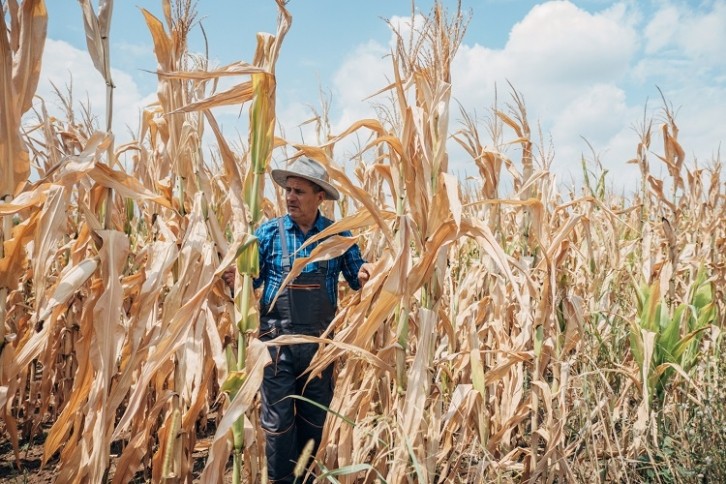The food and beverage industry is heavily influenced by external factors. Whether they be economic, environmental, political or technological, the effects, often referred to as disruptive forces, can be significant in both positive and negative ways.
“Disruptive forces result in a breakthrough or a step change that transforms society,” said Charles Banks, co-founder of thefoodpeople while speaking at IFE 2024.
So how are these external factors currently influencing the food and beverage industry?
The economy and the food and beverage industry
The recent cost-of-living crisis has had a huge impact on manufacturers and consumers. For manufacturers, the increase in energy and supply costs has heavily impacted profits. However, some manufacturers have passed these costs onto the consumer, with the retail price of commodities such as butter and olive oil, rising. Similarly, commodities containing these ingredients have increased for consumers.
There will be a “straightforward price increase” for consumers, said Dirk Van de Put, chief executive of confectionery manufacturer, Mondelēz International, in response to the increase in the cost of sugar.
This rise in the cost of food and beverages has resulted in a squeeze on already tight household budgets.
According to financial forecaster Trading Economics, consumer confidence in Europe has been on a steady decline over the past decade and reached a record low of -29.70 points in September of 2022.
British brand watchdog, Which, says food prices remain a major concern for consumers, with 85% of UK consumers having equal concern for food prices as energy prices.
Additionally, some manufacturers have moved to reduce the size of their products, without reducing the price, in a process that’s come to be known as shrinkflation. This has eroded consumer trust and it is often done quietly and seen by many as an underhand way to boost profits.
“We have been absorbing rising raw material and operational costs for some time, but the growing pressures mean that we can’t keep things as they are. Reducing the size of our products is not a decision that we take easily,” a spokesperson for Mars Wrigley told FoodNavigator.
 Drought has had a huge impact on the food industry and continues to be an ongoing threat to food security. GettyImages/Nes
Drought has had a huge impact on the food industry and continues to be an ongoing threat to food security. GettyImages/Nes
The environment and the food and beverage industry
Another major influence on the food and beverage industry is the environment. In fact, the environment is arguably the single biggest influence on the food and beverage industry. The importance of establishing sustainable and resilient supply chains has gained widespread attention in recent years as food security has been severely impacted by extreme weather events resulting from climate change.
These extreme weather events are threatening crops and livestock, and are becoming more prevalent across the globe, as the changing climate alters weather patterns.
According to the European Environment Agency (EEA), Europe has experienced an increasing number of severe weather-related natural hazards, including droughts, forest fires, heatwaves, storms and heavy rain, over the past decade.
“These events are unfortunate reminders of the changing and volatile climate that Europe needs to adapt and prepare for, while taking action to drastically reduce carbon emissions in order to slow down and limit climate change,” says a spokesperson for the EEA.
And these extreme weather events are not only limited to Europe. The United Nations (UN) has warned that the consequences of global climate change now include, among others, intense droughts, water scarcity, severe fires, rising sea levels, flooding, melting polar ice, catastrophic storms and declining biodiversity.
Just recently, FoodNavigator reported on the peanut shortage affecting European manufacturers, resulting from a drought in Argentina, which affected the 2022/23 growing season.
As a result of concerns relating to food security and climate change, regenerative agriculture has gained significant attention in recent years, with many environmental groups urging farmers to adopt regenerative agricultural methods. However, these can be costly to implement and so pose a huge challenge for farmers.
“It’s not that farmers are against working in harmony with nature, they just need help making the transition,” said Peter Wortsman, partner at European Food and Farming Partnerships (EFFP), while speaking at IFE 2024. “At the moment, it feels to them that everything is being put on their shoulders.
“Regenerative agriculture is a viable solution. It focuses more on principles versus rules, and outcomes versus tasks, so that means it’s harder to define because it’s a spectrum rather than something that’s binary like ‘organic’.
“The beauty of regenerative agriculture is that it involves reducing artificial inputs and improving the health of the land and working with nature, it results in higher profitability for farmers and a much more resilient land. But the key challenge is managing that transition.”
And studies suggest consumers are willing to pay more to for sustainable products, with research from Innova Market Insights finding that, “consumers surveyed expect the [food and beverage] industry to stand up for sustainability.”
 The ongoing conflict in Ukraine continues to impact energy prices across Europe. GettyImages/coldsnowstorm
The ongoing conflict in Ukraine continues to impact energy prices across Europe. GettyImages/coldsnowstorm
Politics and the food and beverage industry
Politics can, and does, affect the food and beverage sector in myriad ways. However, there is one political incident, which has had a greater impact than any other in recent years: the war in Ukraine.
Russia’s invasion of Ukraine in March 2022 led to import sanctions being imposed on Russia and Belarus, by the UK, US, Canada, and the EU. This resulted in an immediate spike in energy costs as oil and coal imports from Russia were banned.
Additionally, farmers were impacted as the price of potash, used to replenish potassium within the soil, increased by 500% above the previous year following the sanctions. Russia and Belarus are two of the world’s biggest producers of potash, exporting around 42% of the world’s supply.
Artificial intelligence (AI) and the food and beverage industry
A relatively new kid on the block, artificial intelligence (AI) is proving invaluable to food and beverage manufacturers, showing that it’s not only here for now, it’s here to stay.
“AI is a modern-day reality, with the possibility to revolutionise any and every industry, It’s the cornerstone of the 4th Industrial Revolution,” says thefoodpeople’s Banks.
According to thefoodpeople, AI is already shaking up the food and beverage industry by speeding up scientific research, streamlining stock management and supporting regenerative agriculture through the evolution of green technology. It’s also improving the consumer experience through functions such as product recommendations.
Trends and the food and beverage industry
Though less powerful than the above, food trends continue to impact the food and beverage industry, influencing decisions and profit margins. Trends such as gut health have not only boosted sales of existing health foods and drinks, but have also inspired the launch of new brands such as Zoe and Bio&Me. And this particular trend is a sign of a wider consumer move towards a healthier diet, particularly amongst younger consumers.
“Generation Z has come of age at a time when health and wellness is a major consideration,” explains Dana Macke, associate director of Lifestyles and Leisure Reports at market analyst firm Mintel. “Many younger members of Generation Z follow their parents’ healthy ways and it seems health-consciousness only gets stronger as they approach adulthood.”
>>> Read full article>>>
Copyright for syndicated content belongs to the linked Source : FoodNavigator – https://www.foodnavigator.com/Article/2024/05/03/Environment-to-AI-Disruptive-forces-in-the-food-and-beverage-industry?utm_source=RSS_Feed&utm_medium=RSS&utm_campaign=RSS































